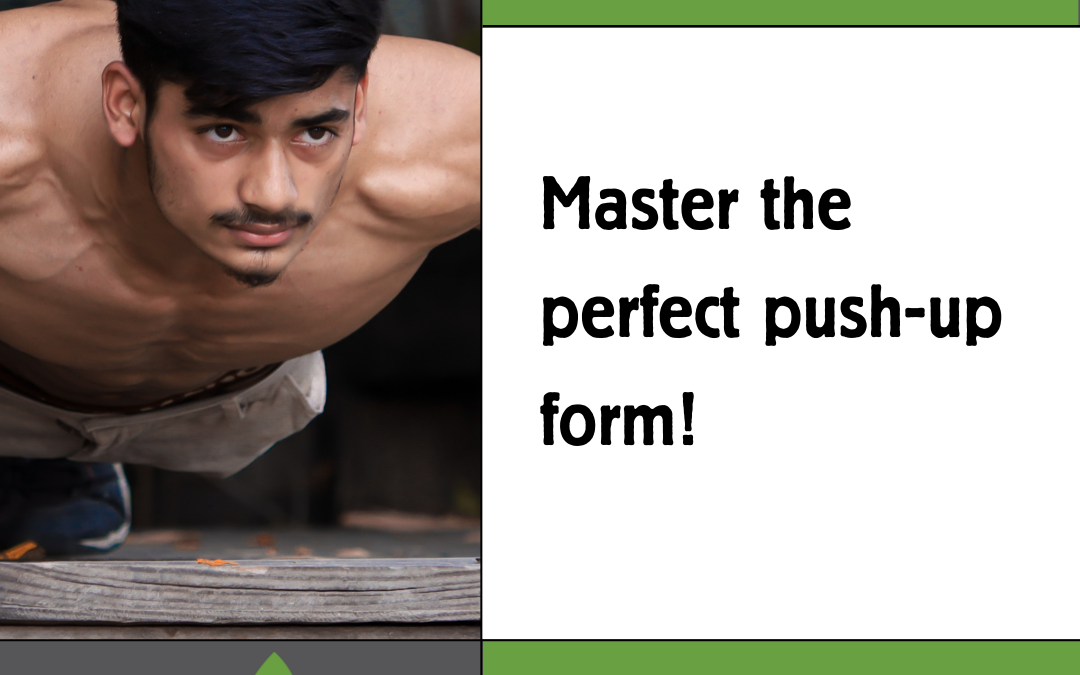
Injury Rehab and Prevention
Push-ups are a cornerstone of fitness, celebrated for their simplicity and effectiveness. Whether you’re a seasoned athlete or just beginning your fitness journey, mastering the this exercise can significantly enhance your strength, endurance, and overall health. This guide will walk you through how to perform a proper push-up, address common pain points, and provide modifications to help you continue progressing in your fitness routine.
Introduction: The Benefits of Push-Ups
Push-ups are more than just an upper-body exercise. They engage multiple muscle groups, including the chest, shoulders, triceps, and core, making them a powerhouse move for full-body strength. Incorporating push-ups into your workout routine can improve muscle tone, enhance cardiovascular health, and increase overall functional fitness.
What is a Push-Up?
A push-up is a bodyweight exercise where you lift and lower your body using your arms while maintaining a rigid plank position. This simple movement is incredibly versatile, offering numerous variations to target different muscle groups and accommodate various fitness levels.

Muscles Worked by Push-Ups
- Chest (Pectorals): The primary muscle group engaged.
- Shoulders (Deltoids): Stabilize and assist in the movement.
- Triceps: Crucial for the pushing motion.
- Core: Keeps your body stable and aligned.
- Back (Latissimus Dorsi and Rhomboids): Provide additional support and stability.
Integrating Push-Ups into Your Workout Routine
To maximize the benefits of this exercise, integrate them into your routine with proper progression:
- Warm-Up: Always start with a warm-up to prepare your muscles and joints.
- Frequency: Aim for 3-4 times a week, allowing rest days in between.
- Sets and Reps: Begin with 2-3 sets of 8-12 reps, adjusting as you gain strength.
- Progression: Gradually increase intensity by adding more reps or trying advanced variations.
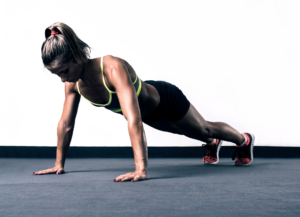
What is a Proper Push-Up?
Properly Performing a push-up is crucial to maximize benefits and prevent injury. Here’s a step-by-step guide:
- Start in Plank Position: Place your hands slightly wider than shoulder-width apart, shoulders are directly over wrists, and the body forms a straight line from head to heels.
- Engage Core and Glutes: Maintain a neutral spine by engaging your core and glutes.
- Lower Your Body: Bend your elbows at a 45-degree angle, keeping them close to your body. Lower yourself until your chest nearly touches the floor.
- Push Back Up: Press into your palms and extend your elbows, returning to the starting position. Ensure your body remains in a straight line throughout the movement.
Addressing Pain During Push-Ups
Experiencing pain during exercise can be discouraging, but there are modifications you can make to continue reaping the benefits without discomfort. Here’s how to adjust your form based on common pain points:
Wrist Pain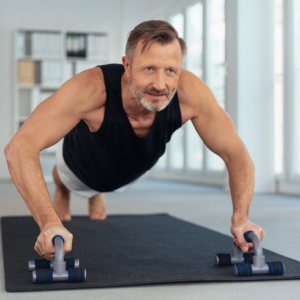
- Modification: Use push-up handles or perform them on your fists to keep your wrists in a neutral position. Alternatively, try incline push-ups with elevated hands on a bench or step.
Back Pain
- Modification: Ensure your core is engaged throughout the movement to prevent sagging hips. If pain persists, try knee or incline push-ups to reduce the load on your lower back.
 Neck Pain
Neck Pain
- Modification: Keep your neck aligned with your spine by looking straight down. Avoid letting your head drop or craning your neck upwards.
 Shoulder Pain
Shoulder Pain
- Modification: Adjust your hand placement to avoid excessive strain on your shoulders. Narrow your grip or try wall push-ups to reduce the load on your shoulder joints.
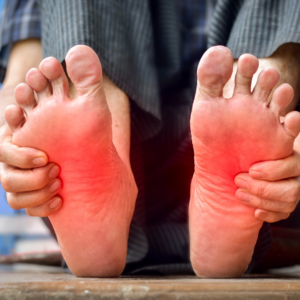 Foot/Ankle Pain
Foot/Ankle Pain
- Modification: Place a folded mat or towel under your feet for added support. Ensure you evenly distribute your weight across your toes.
Push-Up Modifications for Different Fitness Levels
Regardless of your fitness level, there are push-up variations to challenge and help you progress.
Push-Up Beginner Modifications
- Wall Push-Ups: Stand facing a wall, place your hands on the wall at shoulder height, and perform push-ups.
- Knee Push-Ups: Perform push-ups with your knees on the ground, keeping your body in a straight line from head to knees.
- Incline Push-Ups: Place your hands on an elevated surface like a bench or step.

Push-Up Intermediate Modifications
- Standard Push-Ups: Perform push-ups using the proper form described above.
- Wide Push-Ups: Place your hands wider than shoulder-width apart to target the chest more.
- Diamond Push-Ups: Place your hands close together under your chest, forming a diamond shape with your fingers to target the triceps.

Push-Up Advanced Modifications
- Decline Push-Ups: Place your feet on an elevated surface to increase the difficulty.
- Plyometric Push-Ups: Perform explosive push-ups, lifting your hands off the ground at the top of the movement.
- One-Arm Push-Ups: Perform push-ups with one arm behind your back for an intense challenge.

Conclusion
Push-ups are a versatile and effective exercise that can be tailored to any fitness level. By understanding proper form, addressing pain points, and utilizing appropriate modifications, you can continue to benefit from this foundational movement. Remember, consistency and progression are essential. Whether you’re a beginner or an advanced athlete, there’s always room to grow and improve.
Ready to take your fitness to the next level? Start incorporating these variations into your routine today and experience the transformation. Keep pushing forward and stay committed to your health and fitness journey. If you are uncomfortable trying these ideas out on your own, contact Newleaf Total Wellness Centre and book an appointment with one of our Kinesiologists for guidance and support.
Written by: DeVera Nybo, MBA, Owner, Newleaf Total Wellness Centre
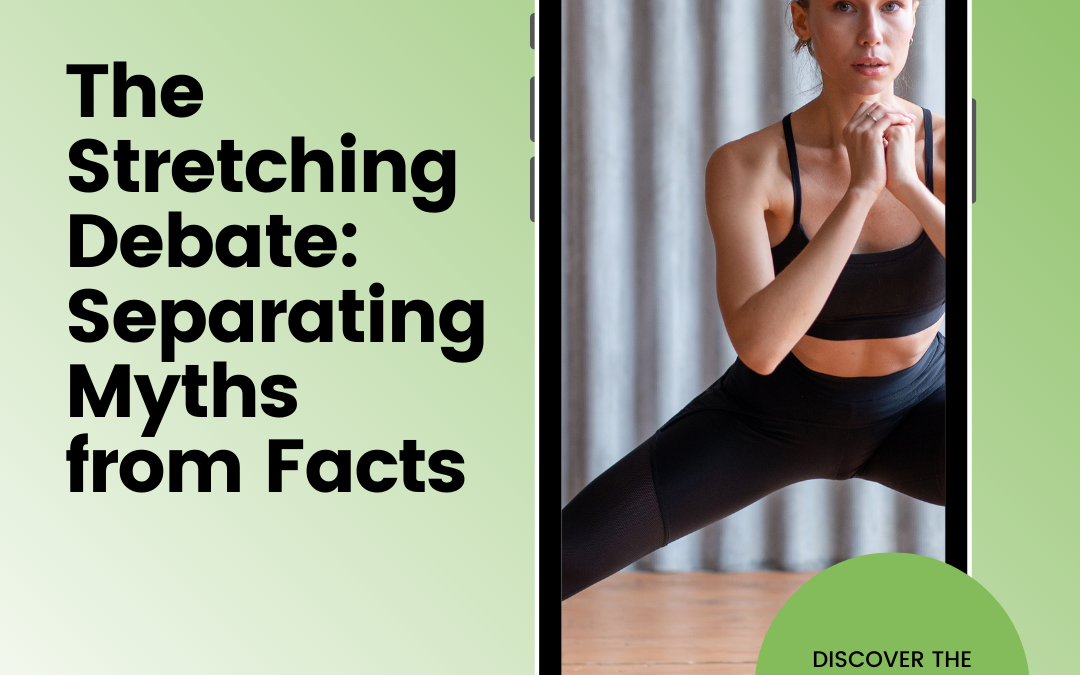
Injury Rehab and Prevention
In the fitness world, few topics have sparked as much debate as the effectiveness and application of stretching. For weekend warriors to elite athletes, the quest for optimal performance and injury prevention has often led to conflicting advice about warm up and cool down routines. Today, we’re dissecting the myths and facts surrounding stretching to empower you with a deeper understanding and a customized approach to enhancing your fitness regimen.
A Closer Look
Stretching, in its many forms, is a foundational element of physical activity. Still, misconceptions abound, leading to widespread debate about its utility and execution. Here’s what you need to know about static and dynamic stretching:

Static Stretching
- Definition: Extending a muscle to its fullest length and holding the position.
- Applications: Best used post-exercise for increasing flexibility and aiding recovery.
- Biomechanical Impact: Improves connective tissue elasticity, potentially reducing injury risk.

Dynamic Stretching
- Definition: Making controlled, active movements that stretch the muscles to their full range of motion
- Benefits: Enhances immediate performance and effectively warms up muscles by mirroring the activity to come.
- Recommendation: Ideal before exercises, a safer method to prep the body for dynamic actions.

Ed Middleton, Physiotherapist
Demystifying Common Myths
Myth 1: The Ultimate Injury Preventive Measure
Contrary to popular belief, the role of stretching in injury prevention is nuanced. While it can be beneficial, its effectiveness depends on the activity, the type of stretches performed, and an individual’s fitness level. Blanket statements about its efficacy overlook the complexity of human biomechanics and the specificity of sports demands.
Myth 2: All Stretching is Equally Beneficial
The reality is that stretching needs to be purposeful. Aimless stretching without a clear goal—improving flexibility, enhancing performance, or facilitating recovery—is unlikely to yield significant benefits. Your unique physical requirements and fitness objectives should inform how, when, and why you stretch.
Myth 3: One-Size-Fits-All in Warm-Ups and Cool-Downs
This notion fails to account for individual variances in physiology and fitness goals. For example, a gymnast may gain from prolonged static stretches to enhance muscle length. At the same time, a sprinter might prioritize dynamic stretches to maintain muscle responsiveness. The key is aligning your stretching routine with your activity profile and personal needs.

The Case for a Customized Approach
Acknowledging the pivotal role of customization underscores the crux of our discussion. A tailored stretching regimen, attuned to your specific physical attributes and aspirations, is the most effective strategy for leveraging stretching’s benefits. This approach encompasses the selection of appropriate stretches and the integration of strength and stability exercises to bolster overall mobility and performance.
Why Professional Guidance Matters
Given the evolving landscape of stretching research, professional insight is invaluable. Specialists like kinesiologists, physiotherapists, and chiropractors can demystify the complexities of stretching, offering tailored recommendations that resonate with your physiological profile and fitness targets.
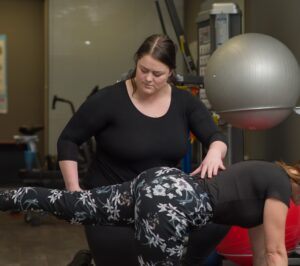
The Power of Personalization
The stretching debate ultimately reveals a broader truth about fitness: any regimen must be personalized to realize maximum effectiveness. By considering the latest science, acknowledging individual differences, and opting for informed, specialized guidance, athletes and fitness enthusiasts alike can unlock stretching’s true potential—enhancing flexibility, performance, and overall well-being on their terms.
In conclusion, as we unravel the myths surrounding stretching and move towards a more nuanced understanding, the role of informed, personalized strategies becomes clear. Incorporating stretching into your fitness regimen should not follow a cookie-cutter approach but rather a thoughtful, individualized plan that acknowledges your body’s unique needs and the demands of your chosen activities. To get started on a personalized plan, book your initial assessment today.
Written by: DeVera Nybo, MBA, Owner Newleaf Total Wellness Centre.
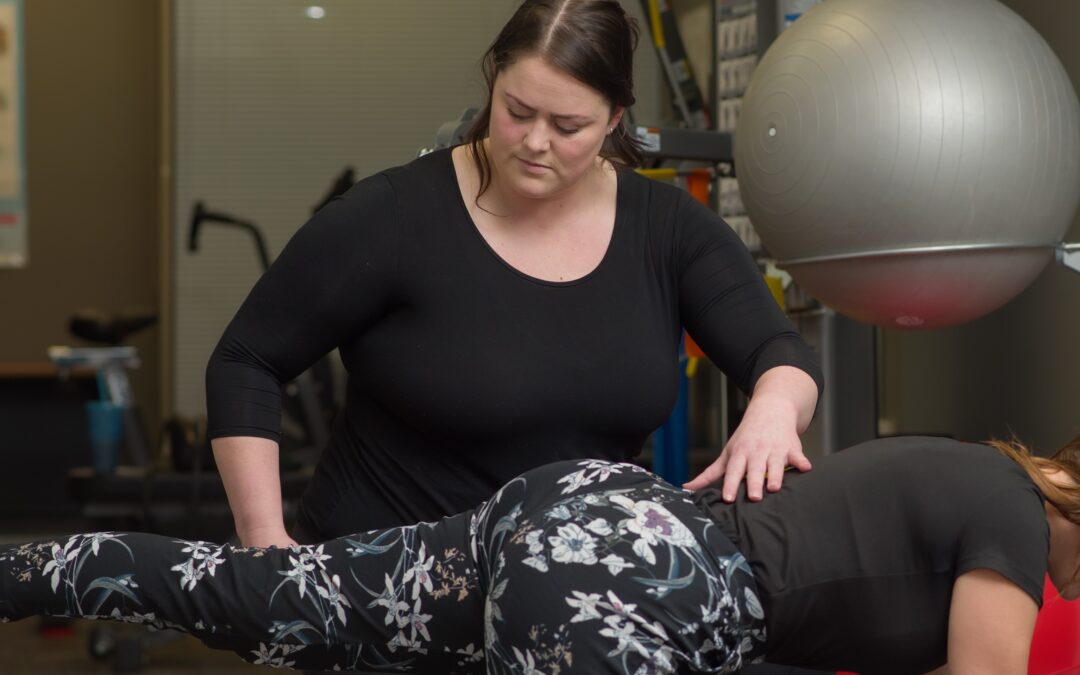
Injury Rehab and Prevention
Active rehab is the beacon of hope that can guide you to a physical recovery and also a restoration of your entire self. Recovering from an injury is more than just healing your body. It’s about getting your life back. Whether you’re an athlete, someone who’s been in an accident, or recovering from surgery, this is a powerful ally in your healing journey..
Active rehabilitation cleverly combines rest with specific exercises, tailored to help you heal physically, and emotionally too. Through a series of thoughtfully assigned activities, it helps rebuild your strength and brings you closer each day to where you aspire to be post-injury.
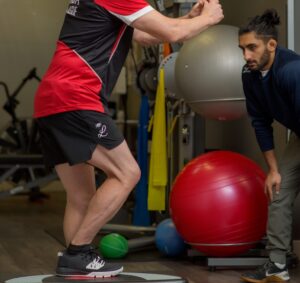
The Active Rehab Advantage
Active rehabilitation is a structured program developed by health experts to help individuals recover from injuries. It includes exercises like stretching, strength training, balance exercises, and specific movements. This tailored approach considers your injury, lifestyle, and goals. The benefits include quicker recovery, improved strength and flexibility, and better injury prevention.
This approach looks beyond the body, considering how physical health, mental well-being, and your environment are connected. Research shows that active rehab, especially for car accident or workplace injury patients, is crucial for recovery. Organizations like the Insurance Corporation of British Columbia (ICBC) and WorkSafe BC recognize the importance and effectiveness of these treatment interventions supervised by qualified professionals like physiotherapists.
Moving early can reduce pain and speed up recovery, contrary to the old idea prolonged immobilization is the key to healing. Active rehab fights immobility’s negative effects on muscles and mental health. Following a planned active rehab program can help you recover faster.
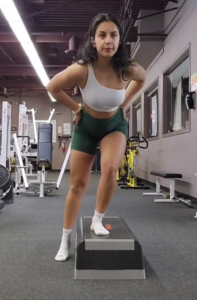
Success Stories
There are many impressive recoveries through active rehab. These cases show improvements like flexibility and strength, but also tell stories of regaining confidence and independence. With professional help, patients can return to daily activities sooner and with more confidence.
Each of us is as unique as our fingerprints, and our recovery pathways should reflect that individuality. Active rehab excels at customizing plans to meet different needs. Injured patients receive personalized plans that heal both body and mind. For cases like ICBC, participating in active rehab can be crucial for getting extensions and approved treatment plans. Athletes benefit from tailored training plans that help them return to their sport.
Partnering with Professionals for Your Recovery
Active rehab isn’t a solo journey. It requires skilled professionals to guide, support, and motivate you. These professionals are more than just therapists; they are mentors, educators, and your source of encouragement. Consider how teaming up with these professionals can lead to your recovery. By partnering with professionals dedicated to your overall well-being, you’re not just joining a program, you’re investing in a transformative process that goes beyond recovery.
Remember, your therapist functions as a collaborative partner in your journey towards wellness. Active participation in therapy is crucial for optimal results. Your dedication to homework tasks significantly enhances the effectiveness of the treatment. Recovery primarily occurs in the comfort of your home, with the clinic visits serving as checkpoints on your progress. Your therapist’s role is to provide guidance, support, and monitoring while ensuring the safety of your exercises and activities. Ultimately, the key to progress lies in your commitment and effort.
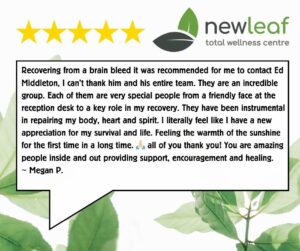
Call to Active Rehab
The path to recovery, though uniquely personal, doesn’t have to be solitary. By actively taking part in your rehabilitation and being the main character in your story, you can bring about many positive changes that reshape your recovery journey.
Whether you’re recuperating from an injury, preparing for surgery, or on a road to recovery from a car accident or on WorkSafeBC claim, consider active rehabilitation. Collaborate with experts, set targets, and see the transformation happen. Don’t settle for a slow recovery. Seize control of your healing journey by including active rehabilitation in your routine and recover faster.
Start your active rehabilitation today and redefine what recovery means to you. Book an appointment with Randi or Jaskiat here.
Written by: DeVera Nybo, MBA, CEO/Owner Newleaf Total Wellness Centre
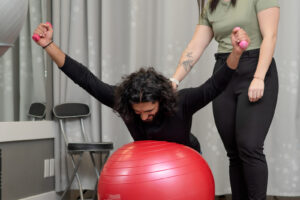
Therapy Options Explained
For anyone involved in sports or fitness or undergoing rehabilitation for an injury, it’s crucial to know about the various treatment options available to help with recovery and injury prevention. Athletic Therapy and Kinesiology are two fields often mentioned in the same breath. Still, they each offer unique benefits and approaches to rehabilitation. If you’re wondering which path to take for optimum recovery, you’re not alone. This blog post aims to explain each practice and aid you in making an informed decision for your healthcare needs.

What is Athletic Therapy?
Athletic Therapy treats acute and chronic muscle, bone, and joint injuries. Certified athletic therapists receive training in the prevention, emergency care, assessment, and rehabilitation of musculoskeletal injuries. They use various techniques – including manual therapies, therapeutic modalities, corrective exercises, physical reconditioning, taping, and bracing – all geared towards a speedy and safe return to activity, whether for everyday functioning or competitive sports.
You might spot athletic therapists attending to injuries on the sidelines at sports games, ready to provide emergency care. Their expertly honed skills make them vital in professional sports teams where quick and decisive action can make all the difference.
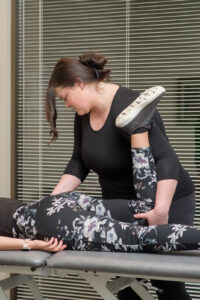
What about Kinesiology?
Kinesiology takes a bird’s-eye view of body movement. This science examines exercise, human movement, and how physical activity affects overall health and wellness. Rather than focusing on injury treatment, kinesiologists usually provide movement analysis and physical ability assessments. They promote active lifestyles and injury prevention through carefully designed exercise programs.
Kinesiologists work in various settings, including clinics, fitness centers, corporations for workplace health, and research. They contribute significant insights into how people can harness movement and exercise to enhance well-being.

Comparing Education and Certification
To become a certified athletic therapist, candidates must complete a dedicated Bachelor’s Degree program with at least 1200 hours of practical training in diverse settings and pass a rigorous certification exam. Kinesiologists generally require a Bachelor’s Degree in Kinesiology or a closely related field but do not have the same focused training specifically for injury assessment and rehabilitation.
Insurance Considerations
Before choosing your therapy path, it’s essential to consider insurance coverage. Insurance plans may not cover Athletic therapy and kinesiology services, so check what your policy allows for. ICBC funds both, but a Physio-Directed Active Rehab Program could be a viable alternative if you’re dealing with an injury not covered by accident insurance, and you don’t have coverage under your extended benefits.
Such programs, typically involving an Athletic Therapist or Kinesiologist overseen by a Physiotherapist, may be billable under physiotherapy benefits, meaning more likelihood of coverage by insurance providers like Manulife, Canada Life, Sunlife or Pacific Blue Cross.

Kinesiology or Athletic Therapy: Making the Right Choice for You
The right choice between Athletic Therapy and Kinesiology depends on your specific needs and goals. An Athletic Therapist could be your best choice if you focus on expertly navigating the road from injury to activity with precision. Conversely, suppose you want to enhance your movement, build strength, and foster recovery through regular physical activity. In that case, kinesiology might be the way to go.
The bottom line comes down to compatibility. Ensuring that your therapist has the requisite qualifications, experience, and an approachable personality is as important as their professional capabilities. Trust, comfort, and confidence in your therapist’s expertise are non-negotiable in your recovery journey.
—
This post aims to clarify the distinctions between Athletic Therapy and Kinesiology, offering insight to athletes, fitness enthusiasts, and patients alike for better-informed health and recovery choices.
If you have questions or need personalized guidance, don’t hesitate to contact our clinic or book with one of our healthcare professionals, who can provide tailored advice based on your unique situation and goals.
Written by: DeVera Nybo, MBA, CEO/Owner, Newleaf Total Wellness Centre.

Injury Rehab and Prevention
If you’re reading this, chances are you’ve encountered the frustrating plateau that often accompanies the road to recovery. As an ICBC client or someone who’s experienced injury, you know all too well that healing is not always linear. Despite following medical advice, sometimes progress just stalls. But why does this happen, and more importantly, what can be done to overcome a setback in your injury recovery? This blog post will address these crucial questions and offer actionable strategies to help you overcome injury setbacks.

Find a Therapist You Trust to Help Overcome a Setback in Your Injury Recovery
One of the cornerstones of effective recovery is working with a healthcare provider you trust. A strong patient-therapist relationship leads to better engagement, more meaningful therapy sessions, and, ultimately, improved outcomes. If your recovery has plateaued, evaluate your partnership with your therapist.
Do you feel heard and understood during your sessions? Is your therapist attentive to your concerns and adjusting treatments accordingly? Trust is essential—don’t hesitate to seek a second opinion or find a new therapist if it doesn’t feel right. Remember, this is about your healing, and you deserve a guide who resonates with your recovery goals.
Overcome a Setback by Attending Your Appointments
It’s not uncommon for life to get in the way of recovery. Missed appointments, however, may be the culprit behind a stalled recovery process. Consistency is vital when it comes to rehabilitation and healing. Each session builds upon the last; skipping appointments can disrupt this progression.
Recommit to attending all scheduled appointments or discuss with your therapist a suitable schedule that accommodates any constraints you might have. Being proactive and reliable with your presence can play a significant role in getting your recovery back on track.

Attending your scheduled appointments to avoid setbacks
Be an Equal Partner in Your Recovery
Recovery is a two-way street; it requires the expertise of your therapist and your active participation. To regain momentum, adopt the mindset of an equal partner in your treatment. Be candid with your therapist about pain levels, discomfort, or concerns. Provide feedback on what’s working and what isn’t. The more information you share, the more your therapist can tailor the recovery plan to fit your specific needs.
Empower yourself by asking questions and understanding the rationale behind each aspect of your treatment. When you know the ‘why’ behind each exercise or recommendation, it likely becomes more meaningful and integral to your routine.

The therapist/patient relationship is crucial to overcome injury setbacks.
Do Your Homework to Overcome Injury Setbacks
Often, recovery extends beyond the confines of the therapist’s office. “Homework,” such as exercises, stretches, or lifestyle changes, is frequently prescribed to complement in-clinic treatment. If you’ve become lax with your at-home program, now is the time to reinvigorate your commitment.
Implement strategies to ensure you do the work: set reminders, create a dedicated exercise space, or find a recovery buddy to keep you accountable. Your diligence with these tasks can dramatically influence the speed and effectiveness of your recovery.
Conclusion
Setbacks in recovery can be discouraging, but identifying the reasons behind stalled progress is the first step toward regaining momentum. By fostering a trustworthy relationship with your therapist, attending all your appointments, becoming an active participant, and diligently doing your prescribed “homework,” you’re paving the pathway to your successful recovery.
Your commitment to these strategies rallies you back to health. It equips you with resilience and a proactive approach to healing. Remember, your recovery is a personal journey, and you hold significant power in influencing its direction and destination.
Still have questions? Visit our learning centre for more answers to common questions or book an initial assessment with one of our physiotherapists.
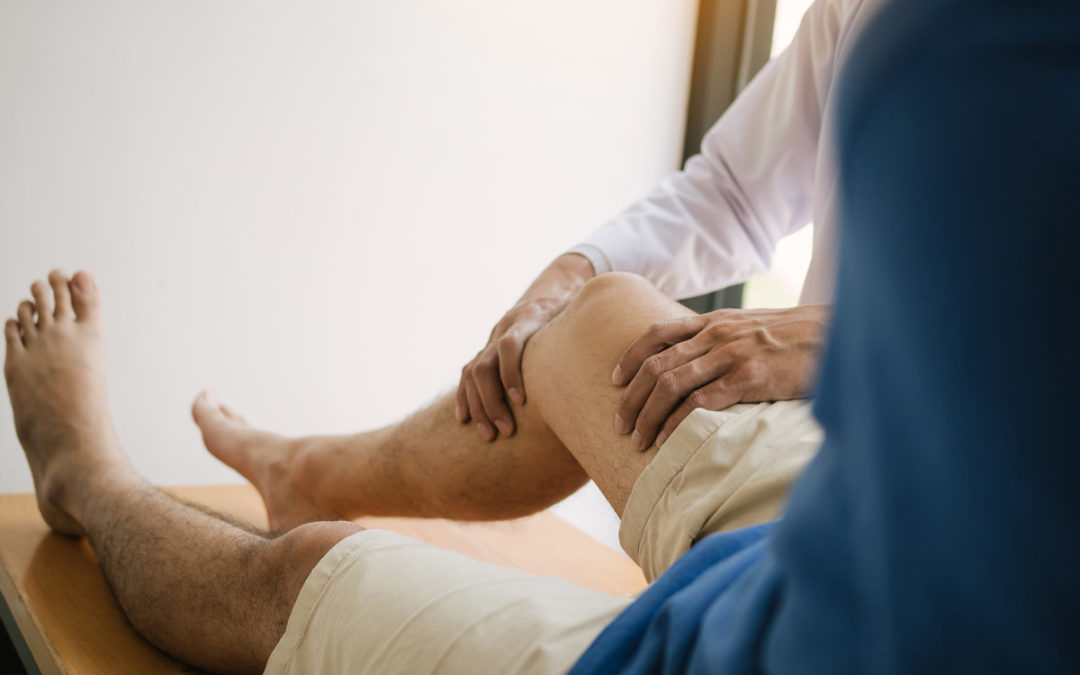
Injury Rehab and Prevention
Knee injuries are common in sports, and ACL tears are among the most serious. While there are many types of knee injuries, this article focuses on the most frequent sports-related cases — including ACL tears — and explores effective treatment options to support recovery and long-term joint health.
Ligaments
There are four main ligaments in the knee: the lateral collateral ligament (LCL), the medial collateral ligament (MCL), the anterior cruciate ligament (ACL), and the posterior cruciate ligament (PCL). The ACL is in front of the PCL and gets injured more often than the PCL.
The ligaments you injure can have partial or complete tears. There are typically two potential treatments: surgery or no surgery. What the patient needs depends on the extent of the injury and also the lifestyle of the patient. For example, a competitive skier will likely want/need his or her knee to work perfectly when the injury heals and is more likely to get surgery than someone whose main exercise is walking 100 feet to his or her vegetable garden.
For those who do not get surgery, they will likely need a knee brace for some period of time and even perhaps permanently while doing anything that puts a lot of stress on the knee.
Bone
Then there is the possibility of breaking one or more bones that comprise the knee. There is the knee cap, the patella, but there is also the bottom of the femur (thigh bone) and the tops of the tibia and fibula (lower leg bones). These breaks can be simple cracks that are not displace all the way to comminuted fractures in which bones break into a lot of little pieces.
So, again, the treatment will depend on the severity of the bone injury. More severe breaks will need surgery and possibly plates and screws. Simpler breaks can usually be treated with a cast or brace.
Surgeries on ligaments can sometimes be done arthroscopically or through one or more small incisions, and sometimes not.
In any case, no matter what your knee injury is, you will likely need some physical therapy at the end of it. Your joint will also be more prone to arthritis as you age, and you may experience some ongoing pain. We are experts on physiotherapy following knee injuries and can help you to regain maximum function in your knee.
If you have received a knee injury like any of those described above, give us a call in Abbotsford at (604) 850-2511, and let us help you.
Newleaf Wellness offers a variety of therapies including physiotherapy, chiropractic, naturopathic, and massage therapy in a warm and compassionate environment in our Abbotsford location.
If you have any questions about this article or would like to make an appointment, please contact us.
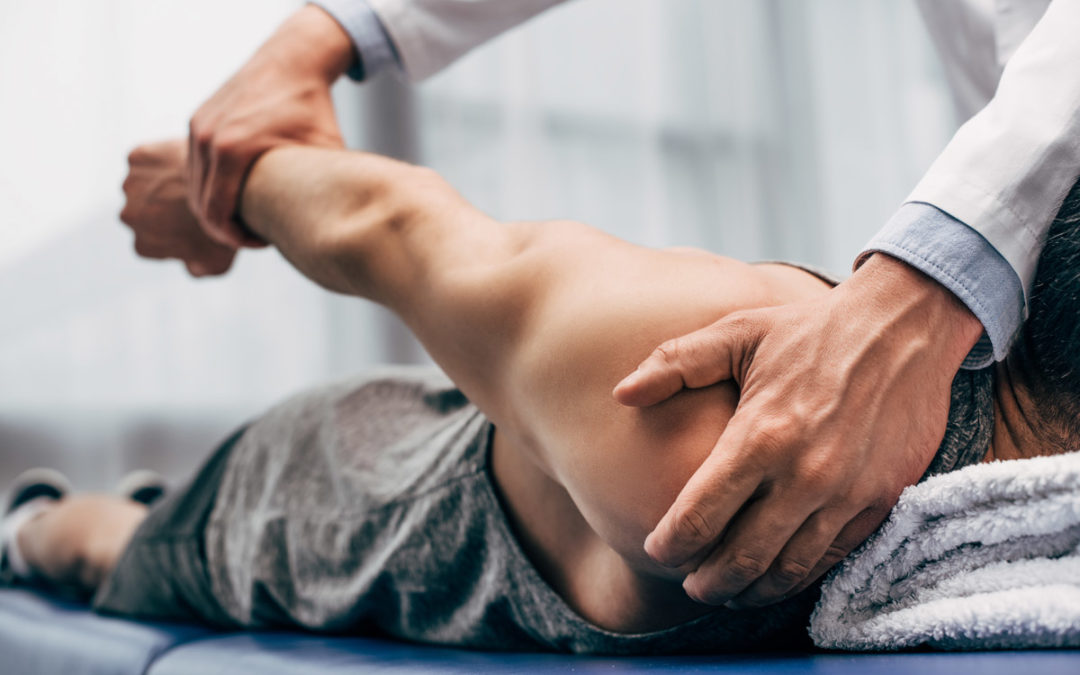
Injury Rehab and Prevention
Sports are a great way to stay active, but they also come with the risk of injuries. Strenuous activity can lead to strains, sprains, or more serious issues like concussions and broken bones. Whether you’re a beginner or a professional, sports injuries can sideline even the most seasoned athletes. If you’re facing a tough recovery and want to minimize downtime, chiropractic care can help with sports injuries by targeting the root causes and promoting faster healing.
Chiropractors are trained to diagnose and treat musculoskeletal conditions, including those that commonly result from athletic activity. They can address problems related to your bones, muscles, and joints. During a typical session, your chiropractor will use manual techniques to adjust your spine, joints, and ligaments—offering relief from pain, improving flexibility, and reducing inflammation. These treatments are designed to help with sports injuries in a way that’s holistic and non-invasive.
Regular chiropractic visits are an effective way to manage pain and swelling from injuries. They also improve flexibility and range of motion, which can help prevent future injuries. Whether you’re recovering from a sprain, strain, or repetitive stress injury, chiropractic care can help with sports injuries by supporting long-term recovery and performance.
No matter what type of injury you’re dealing with, a chiropractor can help speed up your recovery and get you back on your feet. If you’re looking for an alternative treatment option to help with sports injuries, consider visiting a chiropractor today.
At Newleaf Wellness Centre, our team of experienced chiropractors can help you to recover from your sports injury quickly and effectively. We offer multiple sports recovery treatment methods, including chiropractic adjustments, massage therapy, and physiotherapy. Contact us today to book an appointment.
Newleaf Wellness offers a variety of therapies including physiotherapy, chiropractic, naturopathic, and massage therapy in a warm and compassionate environment in our Abbotsford location.
If you have any questions about this article or would like to make an appointment, please contact us.
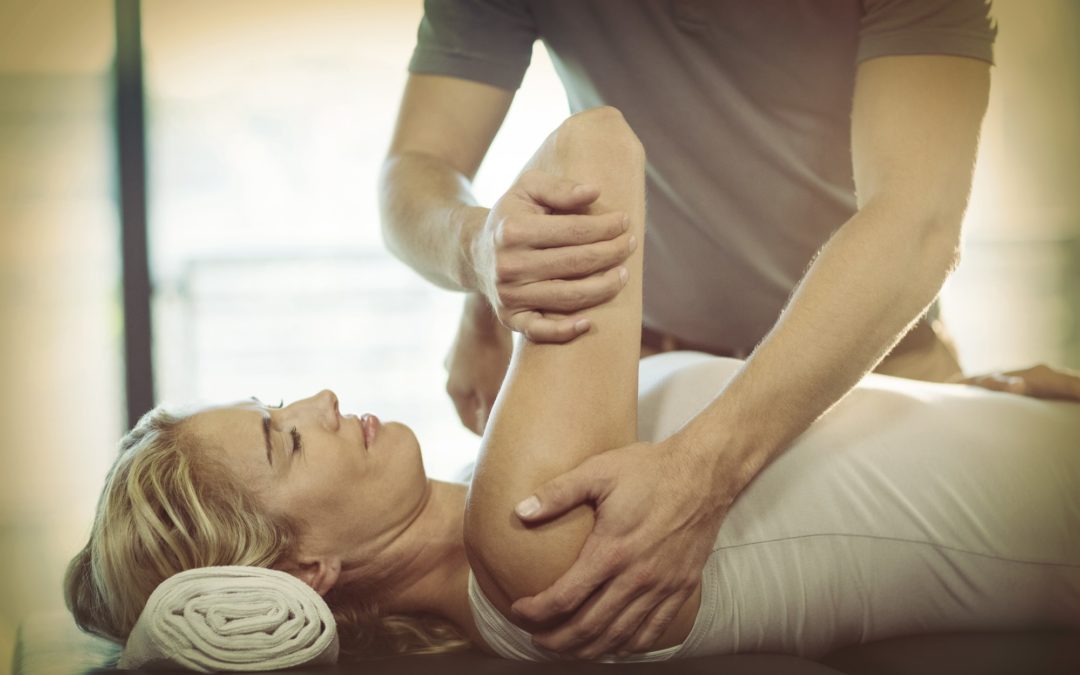
Therapy Options Explained
Choosing a physiotherapist can be challenging. You want physios who are highly trained and educated in the field they work in. It is also important that you have therapists who can provide you with education for injury prevention and lifestyle changes.
Over half of all physiotherapists in Canada are working in a community setting. These outpatient clinics treat many people each year for injuries or illnesses.
If you need help finding quality physiotherapy services near you, then keep reading on for more information.
What Is a Physiotherapist?
Physiotherapists are health care workers. They specialize in treating various diseases, illnesses, and injuries through a hands-on approach. These therapists also use different manual techniques and exercises for patients.
Through these tools, they help promote health education and wellness.
Physiotherapists do not use invasive techniques. All of the hands-on approaches and modalities are non-invasive and safe.
These techniques are not limited to hands-on assessments. They can include modalities, exercises, and at-home programs.
Physiotherapists also work in different settings. The type of clinic you choose also determines what kind of physiotherapist you will likely see. Just like doctors – it is common that there are options for physiotherapists to specialize in coming out of universities.
Inpatient physiotherapists largely work with people who are extremely debilitated or post-operative cases. These may also include specialists who work directly with oncology or neurology.
However, some inpatient clinics are designed for intensive therapy. This usually happens once someone has stabilized medically. They might help teach people basic skills such as walking, transferring, climbing stairs, or getting out of bed.
Sports medicine clinics can focus more on athletic injuries and task-specific exercises. These might include higher-performance activities used in sports. Most adults don’t need that same level of function for their day-to-day lives.
Women’s health specialists are also becoming more popular. These treatments focus on the pelvic floor, incontinence, or other concerns.
People who have experience with physiotherapy are usually from community clinics. These therapists specialize in a wide variety of ailments that the population suffers from. This can include chronic pain and illnesses.
Finally, at-home physiotherapists visit you at your house or work. They can help carry-on treatment plans from an inpatient or outpatient stay.
What Do Physiotherapists Treat?
Physiotherapists treat anything from musculoskeletal to nervous system conditions. They can be involved in post-surgical rehab or ongoing therapy for patients managing chronic diseases.
This is not a comprehensive list, but some of the more common diagnoses that physiotherapists see are:
- Low back pain
- Orthopedic injuries from MVA
- Tendonitis
- Headaches
- Neck pain
- Sprains or strains
- Rotator cuff injuries
- Arthritis
- Sciatica
- Dizziness
A physiotherapist in an outpatient clinic should have the expertise and knowledge to deal with a variety of these ailments. Additionally, look for physiotherapists who work closely with other disciplines.
You might need additional imaging such as X-Rays or MRIs. It is often common that physiotherapists work closely with kinesiologists. A clinic that has a multi-discipline approach can give you greater peace of mind.
You will have multiple, qualified therapists working to help get you back on your feet.
Treatment Options
Physios should have in-depth knowledge of hands-on or manual skills. When you are looking at physiotherapy options, be sure and check with the clinic or therapist on what types of techniques they use.
During the first treatment session, a skilled physio provides an initial assessment. They will look at your medical history, injury or illness, and immobility. Then, they will provide a manual assessment that may look at pain, range of motion, strength, or neurological status.
The best physios use manual techniques and thorough patient history for developing a plan of care. Once a plan of care is developed between you and your therapist, you will meet with him or her a set amount of times per week.
As you improve, your physiotherapist reassesses your plan. This determines when you can stop your sessions or cut back on treatments. They may also send you home with specific exercises that supplement your treatment plan.
Some of the common techniques that the best physios use during treatment sessions include:
- Massage
- Joint mobilizations or manipulations
- Modalities
- Functional training
- Home education
Some of the other techniques and modalities may include dry needling or electrical stimulation.
Physiotherapy Studies
Is physiotherapy right for you? Choosing a physiotherapist can make all the difference. Studies are also looking at how this field of therapy can benefit patient populations.
One study looked at a physiotherapist’s role in back pain. This chronic injury sits at the number one spot for disability around the world. Seeing a physiotherapist not only reduced medication use, but it also helped curb the spread of opioids.
They found that almost half of people who abused opioid prescriptions was because of back pain. Physiotherapists can indirectly help reduce the usage of opioids and the risk of overdoses.
In fact, it was found that exercises and manual treatment were some of the most effective treatment tools for managing back pain. Additionally, physicians and physiotherapists who provided education made a big difference.
This education can come in the form of postural corrections and lifestyle changes.
Choosing a Physiotherapist
Choosing a physiotherapist doesn’t have to be as hard as it sounds. A skilled therapist can use manual and innovative techniques for helping you with any injury, illness, or disease.
During your first assessment, you can feel comfortable asking questions and concerns to your physio. If you are suffering from debilitating injuries or symptoms, don’t wait any longer.
You can find the best physiotherapist in Abbotsford by contacting us today.
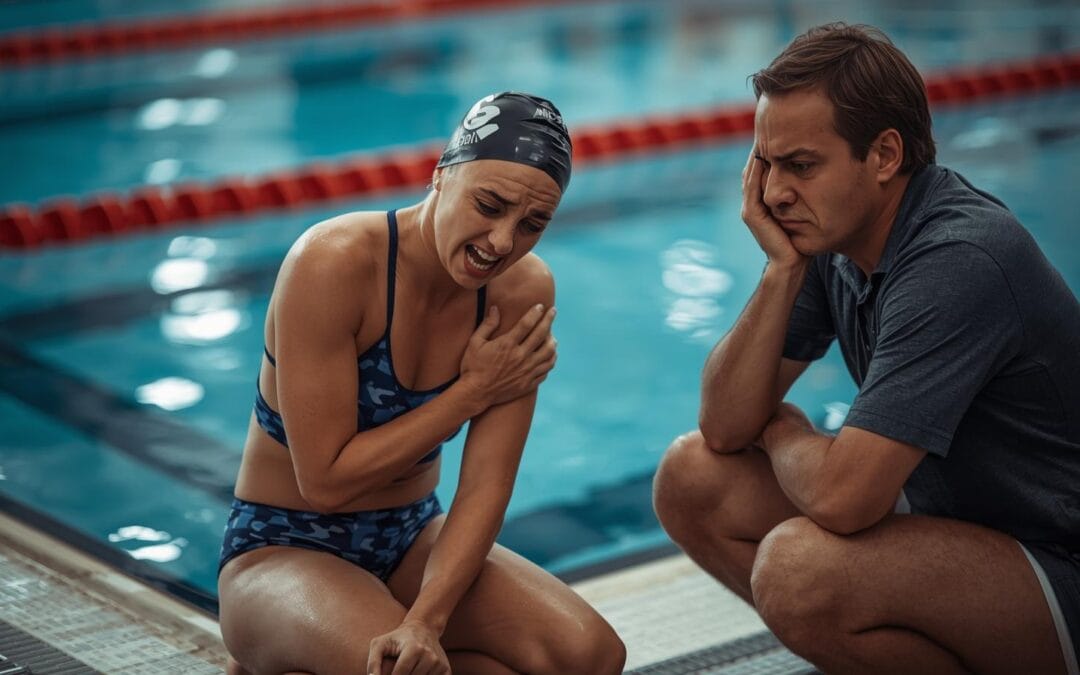
Injury Rehab and Prevention
Before we begin, I’d like to introduce myself. My name is Corinne Allmark, and I swam competitively from age 7 to 20, representing Club, Squad, and Lancashire County. I also competed nationally in breaststroke, butterfly, and individual medley events. Toward the end of my swimming career, I began coaching — and thanks to my experience, I quickly found myself mentoring young swimmers on their way to national and international competitions.
Now, as a physiotherapist, my swimming background gives me a unique advantage when working with swimmers. I understand the physical demands of the sport and how physiotherapy for shoulder pain in swimmers can dramatically improve technique, prevent injury, and support recovery.
Why Shoulder Pain Is Common in Swimmers
The shoulder is a ball-and-socket joint, stabilized by four rotator cuff muscles. These muscles work together to keep the shoulder centered and rotating smoothly. If any of them are injured or weak, shoulder efficiency drops — and so does your power in the water.
Supporting muscles around the neck, back, and ribs also play a key role. They stabilize the shoulder blade, which is the foundation for shoulder strength. If your shoulder blades stick out or “wing,” it may be a sign that these muscles need strengthening.
Coordination and Muscle Timing Matter
To swim efficiently, your shoulder, shoulder blade, and spine must move in sync. When this coordination breaks down — often due to overactive upper traps or lats — your stroke becomes less effective and more injury-prone. Physiotherapy for shoulder pain in swimmers focuses on restoring this balance and retraining muscle timing.
Flexibility Is Key to Injury Prevention
Swimming requires a wide range of motion, especially in the shoulders, spine, and hips. Movements like butterfly arms or breaststroke kicks aren’t part of our daily routine, so regular stretching is essential. A good warm-up and cool-down routine helps prepare your body and reduce the risk of strain.
Core Strength and Body Awareness in the Water
Even though water supports your body, core control and proprioception are vital. Being aware of how you move through the water — and having the strength to control it — can dramatically improve your technique and reduce injury risk.
4 Common Technique Errors That Stress the Shoulder
- Over-rotation or thumb-first entry narrows the shoulder space and can pinch tendons.
- Crossing the center line overstretches the back and compresses the shoulder and neck.
- Reaching too deep increases joint pressure and reduces stroke efficiency.
- Pulling with a straight arm adds unnecessary load and stress to the shoulder.
These errors are common, but correctable. Awareness is key. Try filming yourself or asking a friend to observe your stroke — it’s easier to fix what you can see.
How Physiotherapy Can Help Swimmers
If you’re experiencing shoulder pain or want to prevent it, a physiotherapy assessment can help. We’ll evaluate your range of motion, control, and movement patterns. Based on your results, we’ll create a personalized plan to improve performance and reduce injury risk.
If you’re already dealing with an injury, a combination of hands-on treatment and targeted exercises can support your recovery and get you back in the pool faster.
Land-Based Training for Swimmers
Resistance and core exercises on land can enhance your strength, stability, and stroke mechanics. Foam rolling and regular stretching also help reduce muscle tension and improve recovery.
Ready to Swim Stronger?
Whether you’re managing an injury or want to optimize your technique, physiotherapy for shoulder pain in swimmers can help. Book an assessment now — your shoulders will thank you.
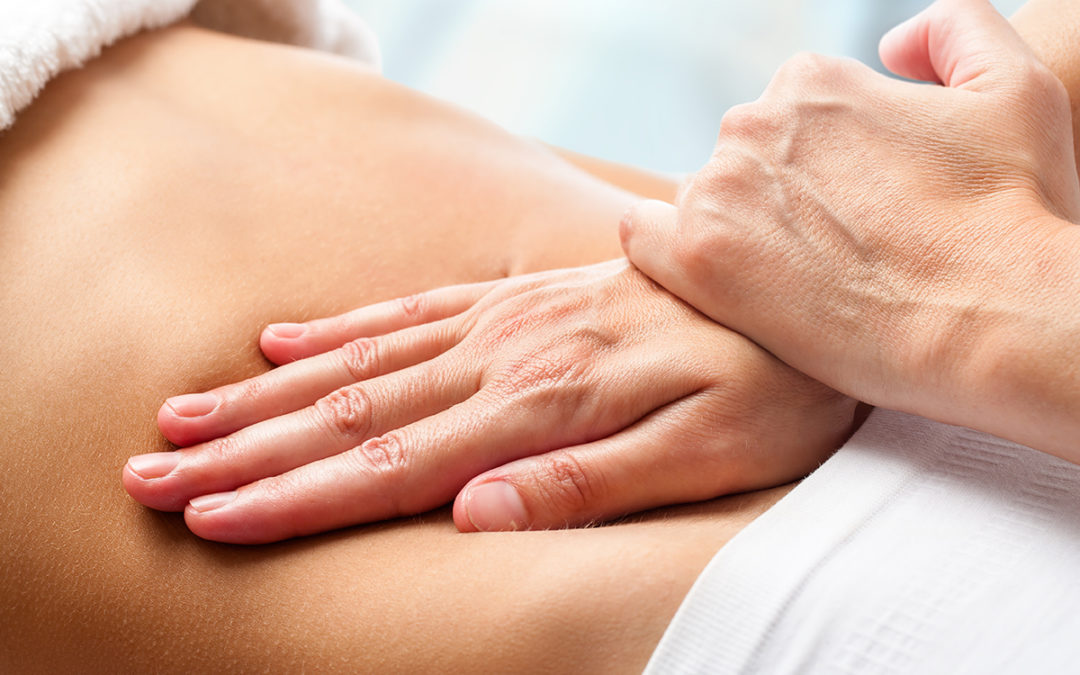
Therapy Options Explained
By definition, a visceral manipulation massage is a slow and gentle process of massaging the viscera, or internal organs, to promote better function, reduce pain, and increase mobility. Sometimes internal organs, such as the kidneys and the stomach, will hold onto stress which can cause nerves to lock up.
When this happens, visceral manipulation brings natural movement through the organs and produces better blood flow to the viscera, resulting in overall better health.
What Kinds of Health Issues Can a Visceral Manipulation Massage Help Cure?
Digestive disorders are the most common ailments treated with visceral manipulation. Bloating, constipation, severe menstrual cramps, nausea, acid reflux, and esophageal issues sometimes require gentle massages in circular motions to bring movement and function back into your body.
These movements break up scar tissue, stimulate the fibers of visceral nerves, and prepare your body to better cope with health issues.
Other Health Ailments That Visceral Manipulation Could Help with Include:
- Sports injuries, such as whiplash, sprains, and sore muscles.
- Men’s health problems, such as swollen prostate, pelvic pain, and testicular pain.
- Women’s health issues, such as endometriosis, ovarian cysts, and menopausal symptoms.
- Post-operative scar tissue buildup.
- Pediatric problems, such as infant colic and painful constipation.
If you do not see your health issue mentioned here, you can contact Newleaf Wellness, one of the best osteopathic practices in Abbotsford, to learn more about how visceral manipulation massage could help alleviate your pain and restore the positive balance to your body.
Visceral Manipulation Massage Can Improve Your Mental Health as Well
Your mental health and physical health affect one another. When you feel bad about your body, your mental health will suffer. When you are coping with mental illnesses, such as anxiety and depression, your physical health becomes less important.
A visceral manipulation massage can help you restore focus and the connection between your body and mind. Stress comes from the mind but builds within your body, becoming trapped in your nerves and muscles. The act of slow, gentle strokes on your skin, muscles, and viscera provides a release of endorphins that allow your body to let go of stress and begin healing from the inside out.
The experts at Newleaf Wellness Center are well-versed in what it takes to restore your mind and body. Our osteopathic practice in Abbotsford provides you with the opportunity to choose positivity and better flow through visceral manipulation massage.
Newleaf Wellness offers a variety of therapies including physiotherapy, chiropractic, naturopathic, and massage therapy in a warm and compassionate environment in our Abbotsford location.
If you have any questions about this article or would like to make an appointment, please contact us.





 Neck Pain
Neck Pain Shoulder Pain
Shoulder Pain Foot/Ankle Pain
Foot/Ankle Pain
























